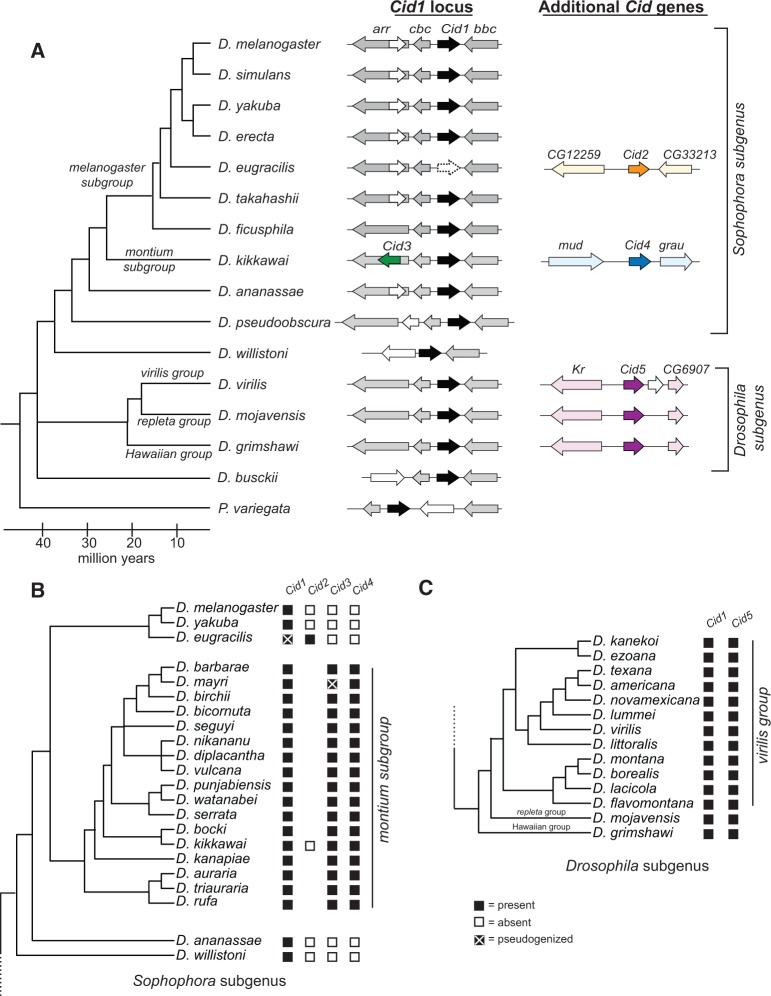Fig. 1.
Identification of Cid duplication events across Drosophila evolution. (A) A Drosophila species cladogram is presented with Phortica variegata as an outgroup. The genomic context of representative Cid paralogs identified by tBLASTn using previously published genome sequences is schematized to the right of each species. Within a species, each locus depicted is contained on a unique genomic scaffold (see supplementary table S1, Supplementary Material online for detailed scaffold information). Cid1 is the ancestral locus based on its presence in almost all species, including the outgroup species P. variegata (black arrow, see column labeled “Cid1 locus”). In total, we found four Cid duplication events resulting in the birth of the genes Cid2, Cid3, Cid4, and Cid5 (see “Cid1 locus” and “Additional Cid genes” columns, dark orange, dark green, dark blue, and dark purple arrows). We also found one Cid1 pseudogene (“Cid1 locus” column, empty arrow, dashed outline) in D. eugracilis. Arrows colored in a lighter version of the corresponding Cid gene color represent genes that define the shared syntenic locus of each paralog. White arrows represent genes that are present in a locus, but do not define the locus since they are present in fewer than 50% of the represented species. We do not provide gene names for these “white arrow” genes. Genes that define each syntenic locus are named based on the D. melanogaster gene name. (B) Summary of Cid paralog presence across the Sophophora subgenus with an expanded montium subgroup. The presence (black box) or absence (white box) of each Cid paralog as determined by PCR and Sanger sequencing is displayed next to each species. The lack of a box means that we did not attempt to amplify the locus. Cid1, Cid3, and Cid4 were preserved in almost all montium subgroup species with the exception of a Cid3 pseudogene in Drosophila mayri (black box with a white X). This analysis indicated that Cid3 and Cid4 were born 20–30 Ma. (C) Summary of Cid paralog presence across the Drosophila subgenus with an expanded virilis group. Cid1 and Cid5 were completely preserved in all virilis group species. We conclude that Cid5 was born 40–50 Ma in the common ancestor of the Drosophila subgenus.

